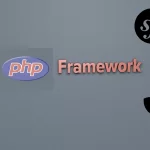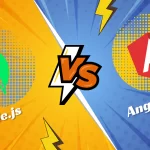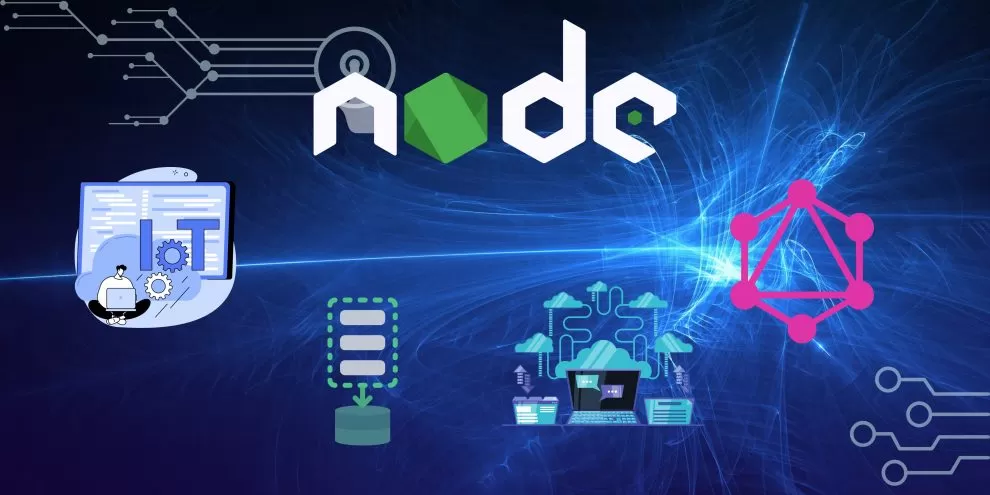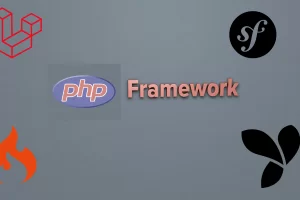Hey, folks! 👋 Curious about the latest in Node.js development trends in the US? You’re in for a treat. Node.js has become a juggernaut in web development, and understanding the current trends is like holding the key to digital innovation. In this blog post, we’ll dissect the landscape of Node.js trends in the US, giving you insights into what’s hot and what’s not. From real-time applications to serverless architecture, we’ve got the scoop on where Node.js is headed.
So, fasten your seatbelts as we take a 360-degree tour of the Node.js ecosystem and how it’s making waves in the ever-evolving tech industry. 🚀🌐 From the rise of microservices to the incredible speed of development, Node.js is rewriting the rules of building robust and scalable web applications. And that’s not all – we’ll explore the community’s pulse on frameworks, libraries, and best practices, ensuring you’re up-to-date with the tools that truly matter. Whether you’re a developer, a tech enthusiast, or just someone who wants to understand the heartbeat of modern web development, this blog will unpack everything you need to know about Node.js trends in the US. Get ready to embark on a journey that promises excitement, innovation, and a deep dive into the world of Node.js like never before. 🌟🎉
Why Keep Up With Node.js Development Trends
Alright, let’s talk turkey about why it’s absolutely worth your time to stay in the loop with the ever-changing world of Node.js development trends.
Staying Ahead of the Curve 📈:
In the fast-paced realm of tech, if you snooze, you lose. Keeping up with Node.js trends means you’re riding the crest of innovation. Whether it’s adopting the latest tools or leveraging emerging methodologies, staying updated ensures you’re always a step ahead.
Optimizing Performance ⚙️:
Performance is the name of the game, and Node.js keeps leveling up. By staying tuned to trends, you’re privy to performance-enhancing techniques. From optimizing app speed to enhancing server efficiency, these trends offer real-world benefits that users and stakeholders will notice.
Enhancing Career Prospects 💼:
Whether you’re a seasoned developer or just starting, being in sync with Node.js trends gives your resume a turbo boost. Companies are on the lookout for professionals who can harness the power of the latest tech, and your familiarity with trends can make you stand out from the crowd.
Future-Proofing Your Projects 🔮:
Trends offer a glimpse into the future. By incorporating forward-looking practices and technologies, you’re ensuring your projects remain relevant and functional as the tech landscape evolves. It’s like building a house with solid foundations to withstand any storm.
Joining the Developer Community 👥:
Being up-to-date with Node.js trends opens the door to a vibrant community of like-minded developers. Engaging with this community means sharing insights, troubleshooting challenges, and collaborating on projects that can shape the tech world.
So, there you have it – the lowdown on why keeping tabs on Node.js development trends is more than just a good idea; it’s an investment in staying sharp, relevant, and part of the exciting tech journey. 🚀🔍
Advantages and Disadvantages of Node.js
Let’s break it down – Node.js comes with its own set of pros and cons that every developer should be well-acquainted with.
Advantages:
Speedy Performance:
Node.js is built on the V8 engine, famous for its speed. It’s like strapping a jet engine to your web app, ensuring rapid execution and quick response times.
Scalability Champion:
Scaling up your app to accommodate increasing user demands? Node.js handles this like a champ, allowing you to handle numerous connections simultaneously with minimal resources.
Full-Stack Unification:
With Node.js, you can use JavaScript both on the front-end and the back-end. This full-stack unification streamlines development, reduces context-switching, and fosters a consistent coding environment.
Huge Package Repository:
The Node Package Manager (NPM) is a treasure trove of pre-built modules and libraries. This means you can stand on the shoulders of giants and integrate ready-made solutions into your projects.
Disadvantages:
Single-Thread Limitation:
Node.js follows a single-thread, non-blocking event loop architecture. While this promotes efficiency, it can also lead to challenges in handling CPU-intensive tasks.
Not Ideal for CPU-Intensive Tasks:
If your application heavily relies on computations or CPU-intensive tasks, Node.js might not be the best choice. It’s better suited for I/O-bound applications.
Learning Curve for Newcomers:
The asynchronous programming model of Node.js can be a bit perplexing for newcomers, especially those accustomed to synchronous programming paradigms.
Unstable APIs:
Given that Node.js is still evolving, there’s a chance of encountering changes in APIs between versions. This can potentially disrupt your application’s functionality during updates.
In a nutshell, Node.js packs a punch with its speed, scalability, and unified coding experience, but it’s not without its challenges. Assessing your project’s requirements and aligning them with Node.js’s strengths and weaknesses will help you make an informed decision on whether it’s the right tool for the job. 🛠️🔧
Ready to dive into the exciting currents of Node.js development trends that are making waves? Here’s the scoop on what’s shaking up the scene:
Also Read: Cost of Hiring Node.js Developers in the US: Factors to Consider
Top Node.js Development Trends to Look Out For
Rise of MEAN and MERN Stack:
MEAN (MongoDB, Express.js, Angular, Node.js) and MERN (MongoDB, Express.js, React, Node.js) stacks are becoming go-to choices for building robust web applications. These stacks offer a cohesive development experience by using JavaScript across the entire application, from front-end to back-end.
Dominance of GraphQL:
Move over traditional REST APIs – GraphQL is taking centre stage. With its flexible querying capabilities, GraphQL allows developers to fetch exactly what they need, reducing over-fetching and under-fetching of data.
Serverless Architecture:
Serverless is more than just a buzzword. It’s a game-changer. With serverless architecture, you focus solely on writing code, leaving infrastructure management to the cloud provider. This trend is streamlining development and reducing operational overhead.
Internet of Things (IoT):
Node.js is flexing its muscles in the world of IoT. Its event-driven architecture aligns perfectly with IoT’s requirements, enabling seamless communication between devices and applications.
Node.js in Cloud Computing:
Node.js is a natural fit for cloud computing. Its lightweight nature and scalability make it a great choice for building cloud-native applications that can handle varying workloads.
Real-time Apps:
Real-time applications are no longer a luxury – they’re an expectation. Node.js’s non-blocking I/O suits real-time scenarios perfectly, making it a top choice for applications like chatbots and live streaming.
Microservices in Demand:
Microservices architecture is all about building applications as a collection of small, independent services. Node.js’s modular approach and scalability make it a key player in developing and maintaining microservices.
In the fast-paced world of Node.js, keeping your finger on the pulse of these trends can provide a significant edge in developing cutting-edge applications that meet modern demands. So, buckle up as we explore each of these trends in depth and equip you to ride the wave of innovation. 🌊🚀
Future Node.js Development Trends to Anticipate
Buckle up, because the future of Node.js development promises an exhilarating ride filled with innovation and transformation. Here’s a sneak peek into what lies ahead:
Reactive Programming Paradigm:
Get ready for the rise of reactive programming in the Node.js world. With the increasing demand for real-time and interactive applications, reactive programming brings a new approach to handling data flow and event-driven scenarios, ensuring smoother and more efficient applications.
Deno’s Impact:
Deno, often dubbed as “Node.js 2.0”, is generating excitement. With enhanced security features, a modular architecture, and TypeScript support out of the box, Deno might influence the way Node.js evolves, triggering a shift in development practices.
Enhanced Microservices Tools:
As microservices continue to dominate software architecture, expect more tools and frameworks tailored specifically for Node.js microservices development. These tools will streamline the creation, deployment, and management of microservices, simplifying complex applications.
Leading Brands Mastering Node.js Trends
When it comes to staying on the cutting edge of technology, these successful brands are showing us how Node.js trends can elevate their digital game:
PayPal:
This global payment giant is a poster child for Node.js adoption. PayPal’s transition to Node.js led to a 2x increase in requests per second and a substantial reduction in response times. Node.js’s ability to handle high traffic and deliver real-time updates perfectly suits PayPal’s transaction-intensive environment.
Netflix:
The streaming giant Netflix hopped on the Node.js train to power its user interfaces. By utilizing server-side rendering with Node.js, Netflix improved load times, reduced client-side processing, and offered a seamless experience across devices.
LinkedIn:
LinkedIn, the professional networking behemoth, embraced Node.js to enhance its mobile app’s performance. The lightweight and scalable nature of Node.js allowed LinkedIn’s app to deliver quick, real-time updates to its massive user base.
Uber:
Uber, the ride-hailing pioneer, leverages Node.js to build real-time applications that keep millions of drivers and riders connected. The asynchronous nature of Node.js ensures efficient handling of concurrent requests, essential for Uber’s dynamic and rapidly changing environment.
Walmart:
Walmart’s journey with Node.js began with a focus on enhancing website performance. The switch to Node.js led to a 2x increase in mobile performance and a 20% increase in conversion rates, showcasing the power of Node.js in optimizing customer experiences.
These brands are not only embracing Node.js but also leveraging its features to revolutionize their digital landscape. By staying up-to-date with Node.js trends, they’re not just keeping pace – they’re setting new standards in performance, scalability, and user engagement. 🚀🔥
In Conclusion: Navigating the Node.js Journey
And there you have it, fellow tech aficionados! 🎉 We’ve taken a whirlwind tour through the exciting world of Node.js development trends in the US. From the rise of MEAN and MERN stacks to the buzz around serverless architecture, GraphQL, and IoT integration, it’s clear that Node.js is reshaping the way we build, deploy, and experience web applications.
Remember, keeping your finger on the pulse of these trends isn’t just a trend itself – it’s an investment in staying relevant and innovative. As Node.js continues to evolve, embracing its strengths while acknowledging its limitations will be key to making informed development decisions.
Frequently Asked Questions (FAQs)
Got questions? We’ve got answers. Here are some common queries about Node.js development trends in the US:















